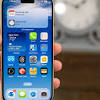The Rings of Power Is Too Big to Fail



Kathryn VanArendonk is a critic who writes about TV and comedy. She gets mad when people say TV is a 10 hour movie.
Photo: Ben Rothstein/Prime Video
The first thing to say about Prime Video’s new Lord of the Rings series is that it is big. There are other qualities to mention — its themes, maybe, or, as my colleague Jackson McHenry instantly noted, how much the series’ younger iteration of Elrond looks like a yassified Niles Crane. Those elements are secondary, though, because the immediate, gut-level response to The Rings of Power is that it feels like looking at the Grand Canyon: You knew it was going to be a pretty sizable situation, but when you finally step up to the edge and look over, your brain cannot help but scream, “Big! Really big! Look how big it is! It just keeps going!”
As has been reported and exclaimed over for years since it was first announced, The Rings of Power, which debuts its first two episodes on September 1, is the most expensive series in TV history. In the worst-case scenario, that amount of money could have resulted in an absurd disappointment, like one of those thousand-dollar stunt meals that gets dreamed up by Vegas hotels, a mediocre burger piled high with inedible gold leaf. The Rings of Power, thankfully, is closer to a best-case scenario: The immense budget has been translated into something that does feel nearly as huge as its price tag.
As the first several minutes lay out generations’ worth of backstory and the camera swoops enticingly across a massive, detailed map, The Rings of Power leans on Bear McCreary’s score as a canny extension of Howard Shore’s original motifs to underline the main message: Whatever this behemoth is, it’s a Lord of the Rings joint first and foremost. There’s going to be a looming darkness. You will remember what New Zealand looks like. Elves will have pointy ears, dwarfs will have beards, orcs will be gross, and the stakes are a continent-size battle between good and evil. You will get a scene in which someone stands on top of a tower and gestures at a vista out of a video-game cutscene, your hair will be blown backward, and you will like it.
Most viewers will see The Rings of Power on a small screen, but it is best designed for a theatrical experience (like what was offered to some critics before release). Funneling this many resources into visual effects is appreciated, certainly, yet it seems like a bit of a shame for a series that many viewers will watch on palm-size screens. Still, some of the appeal will translate regardless. It helps that, unlike a recent swath of science-fiction and fantasy franchises, The Rings of Power’s visual language avoids gloom, preferring to overwhelm with sparkling fires, glinting treasures, and walls of dazzling light.
In its very best and most beguiling sequences, The Rings of Power is all brightness and tactile, detailed beauty. Galadriel — a Lord of the Rings veteran character, now appearing in origin-story mode as played by Morfydd Clark — is ethereal and inhuman in all the right ways. The dwarfs march around their mountain caves with glorious Rube Goldberg–esque machines and grunt with bearded gruffness. The Harfoots, a newly created species that feel like a mash-up of Hobbits, Borrowers, and Beatrix Potter, live in a world of hypertangible, painfully adorable accessories. It’s great world-building. It’s also great at making you want to buy a tiny, perfect Rings of Power–branded Harfoot Playmobil set with a collapsible tree house and six miniature baskets full of acorns and feathers.
The whole kit and caboodle is simply too big to be a failure. The story is expansive enough to fill up the show’s huge map, and where its fantasy premises promise impressive set pieces, like a battle with an ice troll or ships sailing into the Undying Lands, The Rings of Power lives up to those promises. Its emotional core, though simplistic, is just as big and openhearted. It is a forthrightly sincere show, with no room for cynicism. Everything is about Friendship or Honor or Greed or Strength, and it’d be so easy for it all to read as completely goofy if it were not utterly committed to that sincerity in every single beat. Even if that kind of unflinching earnestness isn’t to your taste, it’s impossible to say the show doesn’t achieve the emotional and tonal palette it set out to create.
At the same time, every aspect of The Rings of Power’s immensity is also a steely-eyed refusal to be ignored, an effort to ram itself past the split attentions of Peak TV through sheer, undeniable size. It seeks to consume all the oxygen. It is storytelling by monetary brute force. It is TV that has no interest in being TV — a quality I suspect will extend to embracing the exhausting “eight-hour movie” style of plotting, though I would be happy to watch episodes beyond the first two and be proven wrong. It is TV that would be best seen in a theater, TV that far outstrips the scope and resources of any other fantasy series (even The Wheel of Time, which seems to have been sent out as Prime’s Lord of the Rings trial balloon and now looks sweetly amateurish by comparison). It is TV by virtue of being an audiovisual production released in serialized episodes, but at what point is a television show so big and so uninterested in being TV-shaped that it essentially becomes another species? Years ago, the New York Times’ James Poniewozik suggested that streaming TV was becoming its own genre. The Rings of Power feels like the clearest, most unequivocal realization of that claim, the point at which a streaming series hits escape velocity from the rest of TV and floats off into becoming its own thing, with its own aesthetic values and formal models. Is it even right to call it streaming TV? I’m not sure. Streaming serials, maybe. But if creators are so insistent that eight-hour movies are the model they’re chasing, maybe it would be better to just call titles like this “slow-ass movies” and be done with it.
If the question was “Can Amazon Prime make a good Lord of the Rings experience if it dedicates $715 million to it?,” then it doesn’t feel all that surprising that the answer is “yes.” It could’ve been expensive and completely heartless, and it is a relief to find that, instead, it appears to want its audience to have a nice time. It’s pleasant to have a huge fantasy series in which the characters actually take a few moments to enjoy being friends with one another. When the young Harfoot protagonist insists that she’s made for more than this, that she wants to see the wide world, you yearn to indulge her even though it sounds so trite. The Rings of Power has shouldered its way into culture by being too big to ignore, but at least its whole wide world feels worth seeing.
Sign up to get New York’s week in reviews.
By submitting your email, you agree to our Terms and Privacy Notice and to receive email correspondence from us.


 New Zealand
New Zealand Argentina
Argentina  Australia
Australia  Austria
Austria  Brazil
Brazil  Canada
Canada  Chile
Chile  Czechia
Czechia  France
France  Germany
Germany  Greece
Greece  Italy
Italy  Mexico
Mexico  Nigeria
Nigeria  Norway
Norway  Poland
Poland  Portugal
Portugal  Sweden
Sweden  Switzerland
Switzerland  United Kingdom
United Kingdom  United States
United States 

































